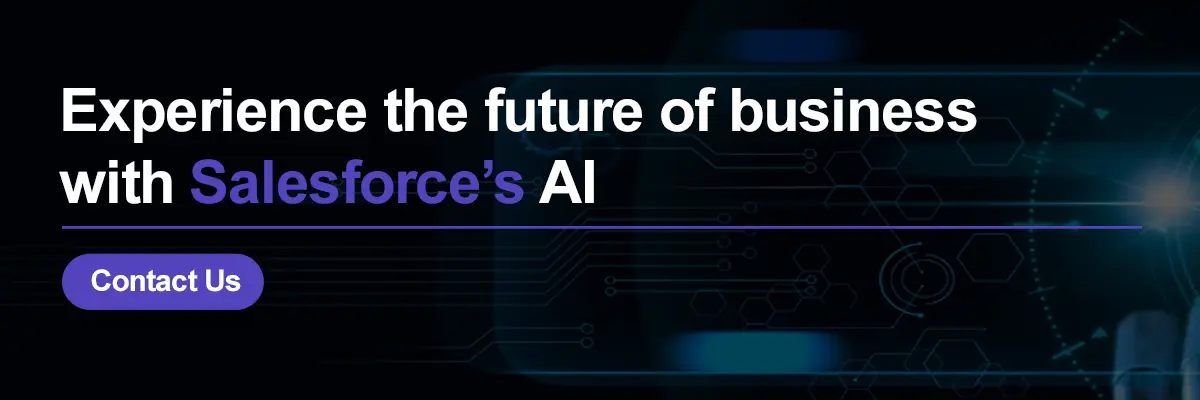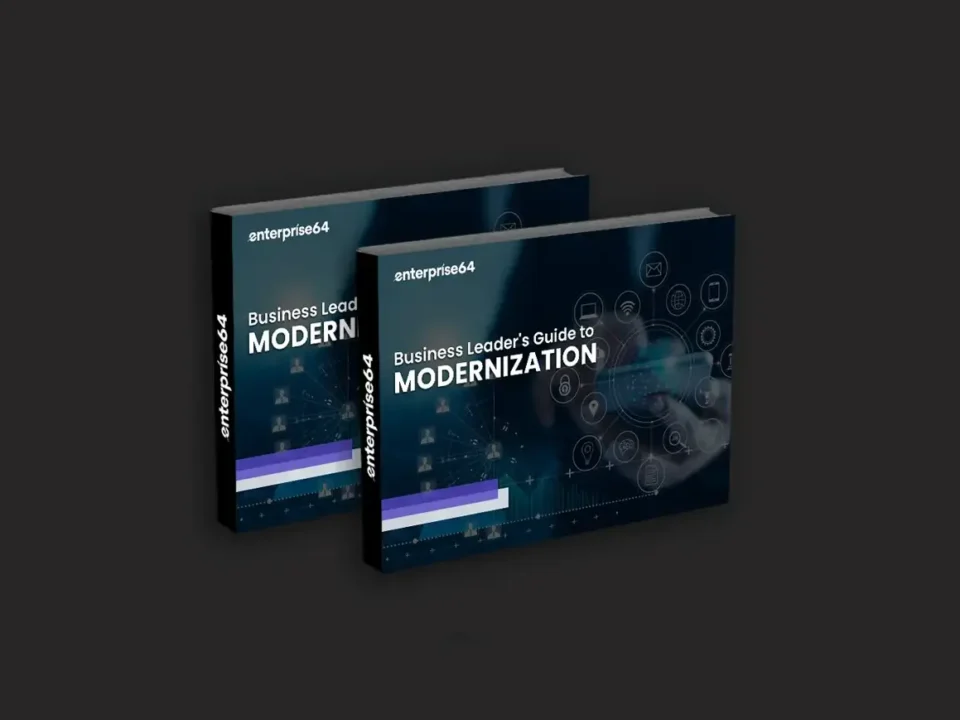Salesforce’s new AI models, xGen-Sales and xLAM, are redefining workflows for sales, marketing, and customer support teams. This upgrade to Actionable AI is reducing costs and enhancing customer experiences for business leaders.
There has already been sufficient talk about feeding data to AI; now, AI’s autonomous nature is beginning to take actions and make decisions on behalf of business owners.
In this blog, we’ll discuss the basics of actionable AI, how xLAMs are transforming business ops, and the best practices for unlocking the potential of Salesforce tools.
What is Actionable AI?
Actionable AI focuses on the practical application of data analysis to drive real-world outcomes. Technically, it represents an evolution from large language models (LLMs) to large action models (LAMs).
Unlike traditional AI systems that stop at identifying patterns or generating insights, Actionable AI goes further, translating those insights into concrete actions and measurable results.
Driven by LAM technology, actionable AI connects insights and action. LAMs are, in fact, more versatile and multimodal than their LLM counterparts. They use advanced training workarounds and can analyze data across a broad horizon.
How xLAM is Transforming Business Operations and Enhancing Customer Engagement
With Salesforce leading the shift in business transformation through its new large action models, xGen-Sales and xLAM, learn how both are helping leaders boost efficiency, reduce costs, and improve customer experiences.
Campaign automation
xLAM and xGen-Sales carry the tedious legwork when it comes to automating and optimizing campaigns. Let’s say a major conference, like Dreamforce or CES, is coming up. xGen-Sales can analyze attendee demographics and past behavior to predict which SaaS products, CRM add-ons, automation tools, or AI integrations will catch the most eyeballs.
The model automatically categorizes your email list, creating a tailored approach to reaching prospects. For instance, you could create and send limited-time demo offers for sales teams or exclusive discounts for IT decision-makers. Such activities boost lead generation; however, you’ll still want to monitor engagement rates and adjust messaging to avoid oversaturation or misalignment with your sales pipeline.
Hyper-personalization
These large action models aim to create unique experiences for your customers. Imagine a customer browsing your SaaS product’s pricing page but not signing up. xGen-Sales can identify this intent and automatically send them a personalized demo video featuring the exact features they viewed and a one-click booking link for a live walkthrough.
If the visitors engage but don’t convert, the model might follow up with a case study explaining how a similar business succeeded using your tool. Such tailored responses nurture increases conversions, but you’ll still need to recheck and improve triggers and content to avoid irrelevant leads.
Smart upselling
The xLAM model will analyze your customers’ buying history and suggest add-ons or upgrades. For example, if a customer purchases a cloud storage plan for their business, xLAM will analyze their usage patterns and learn how much capacity they consume.
The model then automatically serves them a personalized upgrade offer, a higher-tier plan with advanced features like team collaboration tools or enhanced security.
Hence, a value-added addition could include a limited-time offer or a case study indicating how similar businesses benefited from the upgrade. While this drives revenue and improves customer experience, you still need to balance timing and relevance to avoid being perceived as pushy or missing their actual pain points.
Operational efficiency
xGen-Sales will take over your repetitive tasks, including lead generation, data analysis, etc., and free your team from manual work. Suppose a visitor downloads a whitepaper from a cybersecurity service provider’s website. In that case, xGen-Sales will instantly analyze their behavior, such as time spent on specific service pages, company size, and past interactions.
The tool will then score their lead quality, automatically add them to a nurture sequence with relevant case studies, and notify the sales team if the lead meets high-intent criteria, such as revisiting pricing pages multiple times.
This reduces response times from days to minutes while ensuring SQLs don’t slip through the cracks. However, the sales team must be equally thoughtful in reviewing the AI’s lead scoring rules to avoid false positives or missed opportunities based on biased signals.
Faster conversions
Consider a visitor who is eyeing your product but hasn’t purchased it yet. The xGen-Sales tool could automatically send them a limited-time discount offer.
The tool helps decision makers cut down on delays and register quick conversions. However, your team needs to be careful about the frequency of sending out such offers; too many offers can lead to discount fatigue and risk putting the discounts on your customers’ spam lists.

Top Ways to Unlock the Power of Salesforce
Salesforce’s AI tools help tech companies streamline sales, marketing, and customer support, saving time and improving results. Here’s how mid-sized businesses can leverage these features effectively:
Real-time decision making
Salesforce’s xLAM can analyze real-time data and adjust strategies right from the start. For example, suppose a SaaS company experiences a demand spike for a particular software integration. In such cases, the tool will automatically highlight it in marketing campaigns or prioritize sales outreach to potential prospects who might be the right target audience.
This benefits your team by removing guesswork while staying agile, eventually helping you align with long-term business goals rather than just short-term trends.
Scalability without the overhead
Whether you’re a growing tech startup or an established mid-sized firm, Salesforce’s AI scales with you. A cybersecurity company, for instance, can use an artificial intelligence platform to manage customer onboarding at scale, while a cloud services provider can automate responses to support common queries.
Is your infrastructure ready to handle AI-driven scaling? If unsure, you can always connect with experienced technology partners to help you scale.
Knowing when AI needs human help
Leaders must understand that AI has limits, whether it’s traditional AI, generative AI, agentic AI, or actionable AI. If a customer submits a complex support ticket, like a request for a custom API integration, the system will flag it for your team rather than providing a generic response. Balancing such automation and human oversight situations ensures nothing is overlooked.
Your team must regularly fine-tune your AI’s thresholds and trigger conditions to better identify complex or significant customer requests. The idea is to assist the system in distinguishing between routine queries and those that need human intervention.
Smarter cross-team collaboration
Salesforce AI like Marketing Cloud breaks down silos by securely sharing insights across departments. Suppose a customer reports a bug in your platform. In that case, the system can notify the product team while prompting the sales team to follow up with affected clients, ensuring a coordinated response.
Try to set clear access controls and permissions. While cross-team visibility allows smooth collaboration, it’s equally important to certify that sensitive customer data is only shared with authorized teams to maintain trust and adhere to privacy regulations.
Handpicked content: 11 Best Practices for Salesforce Marketing Cloud
Seamless automation for better engagement
When a new lead signs up for your developer tools, Salesforce’s xGen-Sales can assign a sales agent, log the interaction, and send a tailored welcome email, perhaps referencing their interest in API solutions. This automation encourages your team to focus on closing deals rather than spending time on tedious, manual tasks.
Your personalization efforts must be authentic at all costs. Regularly review and update your automated workflows. Even AI-driven messages should reflect the prospect’s actual interests and behavior and not throw generic or mismatched content that can harm engagement rather than build it.

Conclusion
Salesforce’s new AI models, xGen-Sales and xLAM, are changing how businesses operate by turning actionable insights into tangible results. By automating key tasks, personalizing customer experiences, and enhancing operational efficiency, these tools help leaders boost productivity, reduce costs, and improve customer satisfaction.
However, balancing AI automation with human oversight remains crucial for maintaining relevance and effectiveness. As businesses incorporate these advancements, they can scale efficiently while ensuring their AI-driven processes align with long-term goals.





